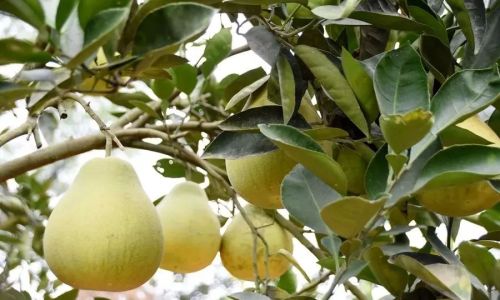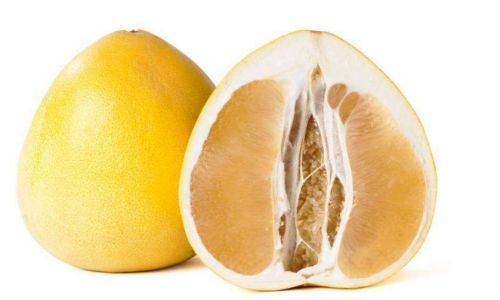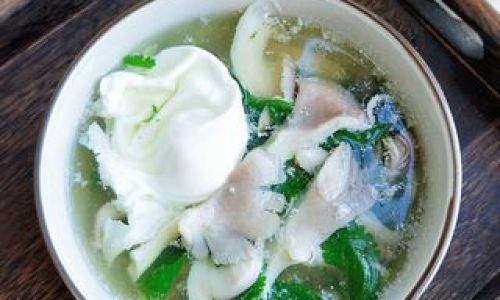Introduction

Pomelo, also known as shaddock or grapefruit in some regions, is a large citrus fruit cherished for its juicy, tangy-sweet flesh and refreshing taste. Native to Southeast Asia, this tropical and subtropical fruit has found its way into the hearts and kitchens of people worldwide. However, enjoying a pomelo at its peak of ripeness can be a challenge, especially for those unfamiliar with its unique ripening characteristics. This guide aims to provide a comprehensive understanding of how to determine if a pomelo is ripe, ensuring that every bite you take is a delightful experience.
Understanding Pomelo Varieties
Before diving into the specifics of ripeness, it’s crucial to understand that pomelos come in various varieties, each with its own unique attributes. Common types include the Thai pomelo, which is known for its large size and sweet-tart flavor; the Malaysian pomelo, distinguished by its deep green hue and juicy pulp; and the Chinese pomelo, which can range from bitter to sweet depending on the cultivar. Each variety may have slightly different indicators of ripeness, but there are general guidelines that apply across the board.
Visual Inspection: The First Step
-
Color: One of the most straightforward ways to assess a pomelo’s ripeness is by observing its color. While young pomelos tend to have a bright green hue, ripe ones often develop a yellowish or even orange tint. However, it’s important to note that some varieties, like the Malaysian pomelo, may retain their green color even when fully ripe. Therefore, color should be used as one of several indicators rather than the sole determinant.
-
Skin Texture: As a pomelo ripens, its skin may become smoother and more evenly textured. Look for a skin that is relatively free of blemishes, cracks, or soft spots. A rough, bumpy, or excessively dry skin can indicate an underripe or overripe fruit.
-
Size and Shape: While size can vary widely among pomelo varieties, a fully ripe pomelo generally feels heavy for its size, suggesting that it is well-hydrated and juicy. Additionally, a symmetrical shape often indicates that the fruit has developed evenly, which can be a sign of good quality.
Tactile Assessment: Feeling for Ripeness
-
Firmness: Gently press the skin of the pomelo with your fingertips. A ripe pomelo should feel firm but yield slightly to pressure. If it feels too hard, it may be underripe; if it’s too soft or mushy, it could be overripe or even spoiled.
-
Elasticity: Another useful test is to press a finger into the skin and then release it. A ripe pomelo will spring back to its original shape quickly, indicating that it is fresh and juicy. A slow recovery or no recovery at all can suggest that the fruit is past its prime.
Olfactory Clues: The Aroma of Ripeness

- Fragrance: A ripe pomelo should emit a faint, pleasant citrus aroma. If the fruit smells strongly or has an off-putting odor, it might be overripe or have started to decay. Conversely, a lack of aroma could indicate that the pomelo is still underripe.
Listening for Ripeness: The Sound Test
- Thump Test: While less reliable than visual and tactile assessments, the thump test can sometimes provide additional insight. Gently tap the pomelo with your knuckles. A ripe pomelo will produce a dull, hollow sound, whereas an underripe one might sound more solid or metallic. However, this method requires some practice and is not foolproof.
Checking the Stem and Base
-
Stem Condition: Examine the stem end of the pomelo. A fresh, green stem often indicates that the fruit was recently picked and may still be ripening. A brown, dry stem can suggest that the pomelo has been on the shelf for a while and might be losing freshness.
-
Base Feel: Feel the bottom of the pomelo, where it sits on the tree. A ripe pomelo will often have a slightly flattened or broader base due to its time on the branch. This isn’t a foolproof method, but it can be a helpful additional clue.
Seasonal Considerations
Pomelos are typically in season during the warmer months, varying by region and variety. Knowing when your local pomelos are in peak season can help you time your purchases to coincide with the best availability of ripe fruits. During the off-season, pomelos may be imported or stored, which can affect their freshness and ripeness.
Purchasing and Storage Tips
When purchasing pomelos, look for them in well-ventilated, refrigerated sections of the grocery store to ensure they stay fresh. Once home, store unripe pomelos at room temperature in a cool, dark place to allow them to continue ripening. Once ripe, refrigerate them to slow down the decomposition process and maintain their freshness for up to a week.
Conclusion
Determining if a pomelo is ripe involves a combination of visual, tactile, olfactory, and sometimes auditory assessments. By paying attention to the fruit’s color, skin texture, firmness, aroma, and seasonal availability, you can increase your chances of selecting a perfectly ripe pomelo. Remember, each variety has its own nuances, so it’s always a good idea to familiarize yourself with the specific characteristics of the pomelos you’re most likely to encounter. With a bit of practice, you’ll soon be able to pick out the juiciest, most flavorful pomelos with confidence. Enjoy your citrusy adventures!





0 comments